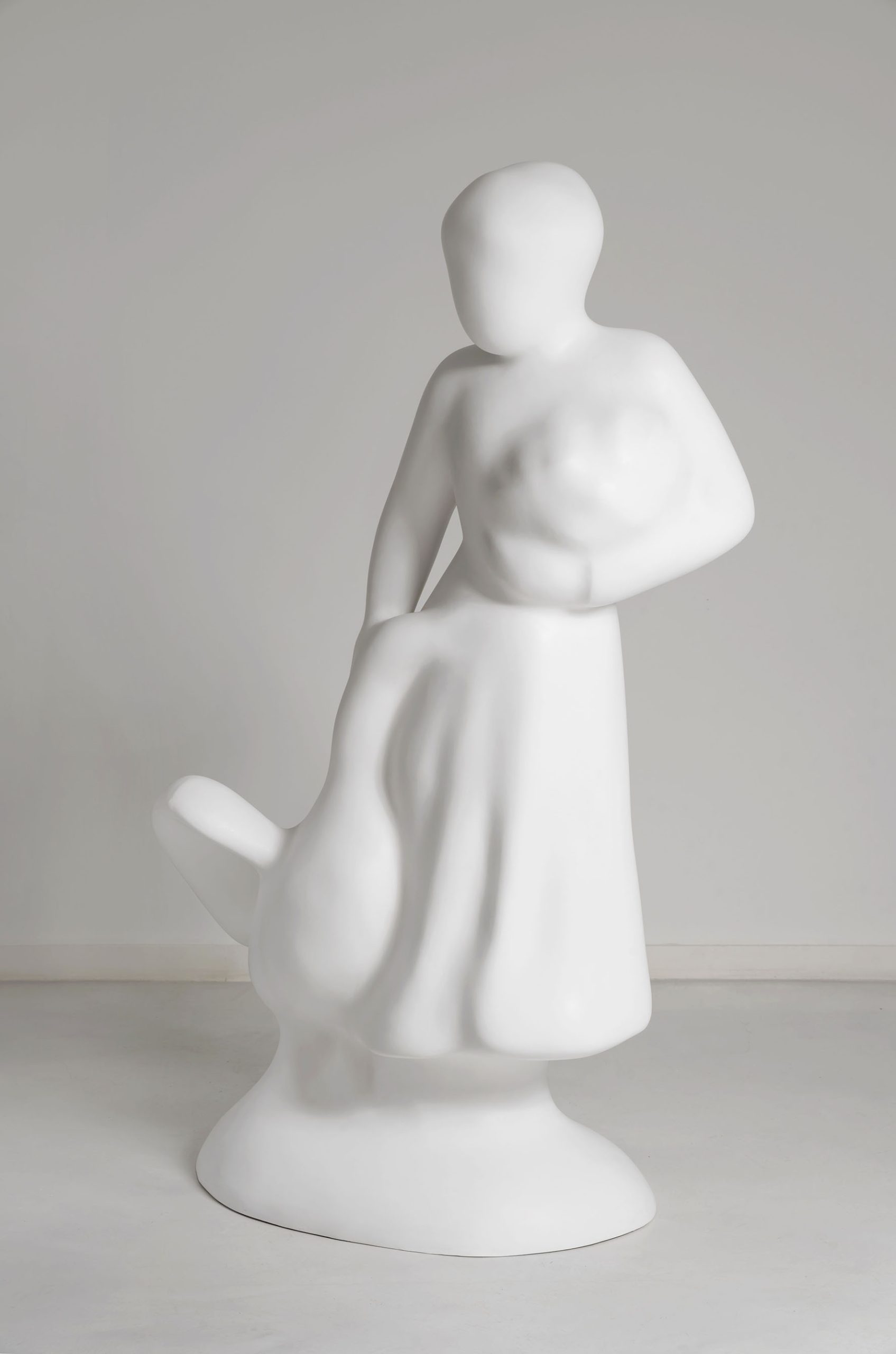Elba Bairon (La Paz, 1947) marks the outset of her relationship with W-Galería as her artistic representative with a project that takes on the space in a way that goes beyond the work’s material consistency and its physical installation. In other words, Bairon undertakes a radical fusion between sculpture and the architecture that frames and contains it, making it unfold in an expanded code that disrupts the notion of a work of art’s integral nature, as a merely technical application modeled in a purely visual sense. This operation takes place at an iconic site for Buenos Aires’ postmodern architecture, in the building located at 452 Viamonte Street, previously home to the Centro de Arte y Comunicación (CayC) higher education centerand exhibition space and remodeled by the firm Manteola, Petchersky, Sánchez Gómez, Santos, Solsona, Viñoly y Tonconogy. Accordingly, Bairon makes the most of the structural organization the building’s spaces have to offer, with the aim of generating different instances of intervention related to design: the first proposes a theatrical journey experience along the gallery’s access “bridge”, and the second deconstructs the circulation and distribution of the first basement level, transforming it into an unsettlingly empty armature with a figure that accentuates the estrangement of the space. She places an apparatus for mid-size sculptures in a corner, where the works’ serial nature is not an implication of style, but an indication of method. The idea that Elba Bairon’s work does not emit messages, but produces effects has been generally upheld. This principle’s contrast is even greater in the setting where the emblematic CayC functioned historically. The institution—founded by Jorge Glusberg between the late 1960s and early 1970s—emitted an abundance of messages that continue to reverberate in the form of inscrutable myth. The walls of its interior, originally painted black, have been reconstituted in white to house W-Galería, which specializes in all questions related to archives and in feminist art practice. Bairon adds to the CayC myth and its contemporary reception yet further with an orientalist interpretation, rooted in her formative years in Montevideo, Uruguay, where she learned Chinese painting techniques that tend to be associated with the abstract ideas of infinity and the void, effectively projected in her work. While Bairon has not objected to the doxa, her inveterate introspection and the singularity of her work have propitiated the tendency to situate both the opacity of her sculpture’s organic forms and the preciousness of the paper pulp modeling technique employed within a remote, aloof aesthetic sphere that sidesteps the anxiety of the here and now. Nevertheless, Bairon executes a reformulation of the space that produces the delicate effect of a fissured labyrinth.


 Bairon Elba
Bairon Elba